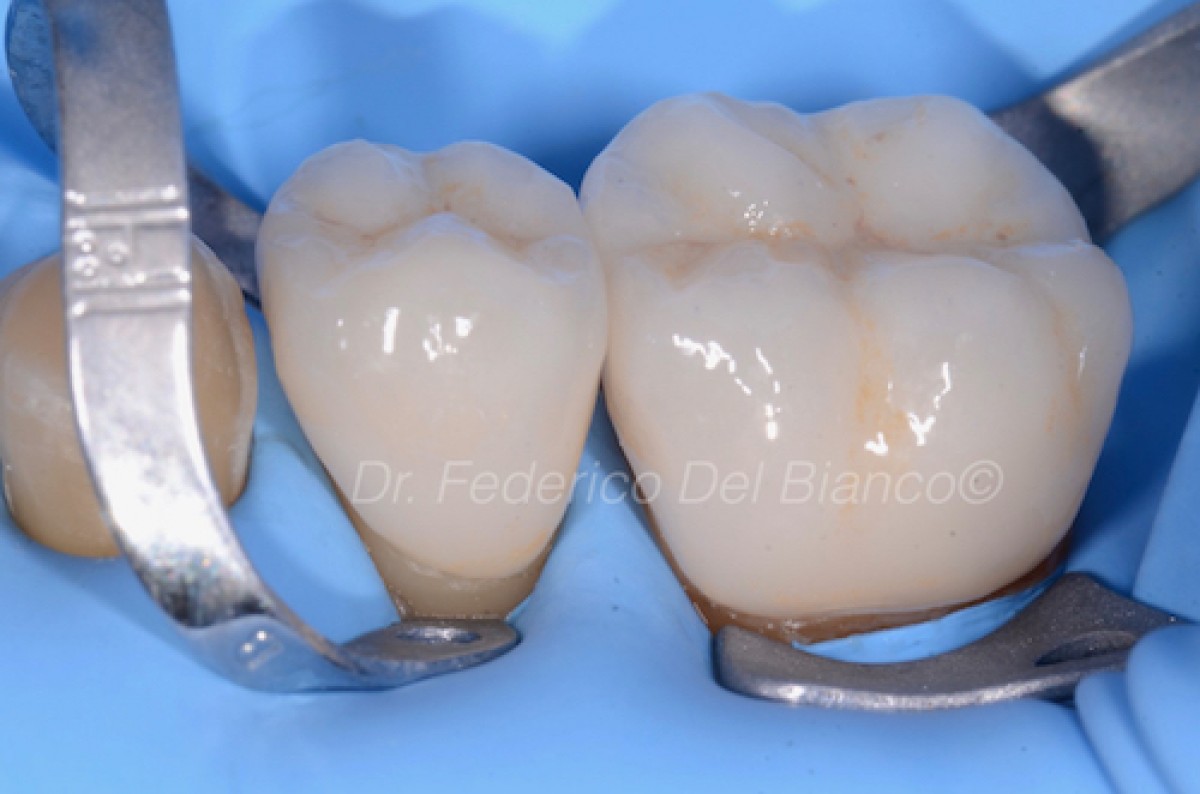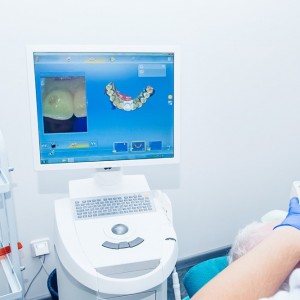
How to lute chairside CAD-CAM ceramics
Co-authors: A. Comba, F. Del Bianco
Lorenzo Breschi
In recent years the use of chairside CAD/CAM ceramics restorations has rapidly increased. The choice of materials includes zirconia-reinforced lithium silicate (VS), infiltrated ceramic with polymers (VE) and nanoceramic resin (GC). Considering the great variety of cementation protocols and luting cements the bond strength of different chairside computer-aided design and computer-aided manufacturing (CAD-CAM) restorative materials to dentin with different resin cements needs to be assayed.
The study conducted by Seda Ustun et al. tested the in vitro bond strength of different CAD/CAM ceramics materials luted with different resin cement immediately and after thermal aging.
Materials and Methods
The occlusal surfaces of 63 molar teeth of similar size were flattened, and rectangular specimens of 2.5 mm in thickness (n=21 per group) were obtained from zirconia-reinforced lithium disilicate (Vita Suprinity-VS), polymer infiltrated ceramic (Vita Enamic-VE), and resin nanoceramic (GC Cerasmart-GC). The specimens were divided into three subgroups (n=7) and cemented using total etch (TE), self-etch (SE), and self-adhesive (SA) cement systems. The teeth were sectioned vertically into 2 equal parts and half of the specimens were subjected to thermal aging with 5000 cycles. The shear bond strength test of all the specimens was measured. Fractured ceramic surfaces were examined by scanning electron microscopy/energy dispersive X-ray spectroscopy (SEM/EDX) analysis. The Shapiro-Wilk test, 3-way analysis of variance (ANOVA), and Fisher Least Significant Difference (LSD) tests were used to analyze the shear bond strength test data (a=.05).
Results
From the collected data, the authors showed that the highest bond strength value was found for the group non-thermal aged VS-TE and the lowest for the group thermal aged VE-TE. Significant interaction was found between TE and SE cemented ceramics (P<.001). For specimens cemented with the SA system, significant interaction was found among ceramics with thermal aged specimens (P<.001). Thermal aging significantly decreased the mean bond strength (P<.05).
Conclusions
Seda Ustun et al. concluded that, based on the findings of their in vitro study:
1. TE or SA systems might be recommended for VS ceramic restorations.
2. Cementation of VE and GC ceramic restorations with SE systems could be recommended.
3. The thermal aging process significantly reduced the bond strength values of all ceramic materials, regardless of the cementation systems. Total etch and self-adhesive cementation systems can be recommended for Vita Suprinity restorations. To cement GC Cerasmart and Vita Enamic restorations, self-etch cementation systems may be more advantageous.
For additional information: Effect of different cement systems and aging on the bond strength of chairside CAD-CAM ceramics.
 Related articles
Related articles
Co-authors: Roberto Spreafico, Franco Brenna, Cesare Robello, Massimo Nuvina, Massimo Mario Gagliani
The aim of this study is to pro- pose an update on ceramics for partial and total indirect reconstructions performed with CAD/ CAM. MATERIALS AND METHODS Through a careful study of...
Restorative dentistry 01 July 2025
Advances in CAD/CAM Technology for Chairside Restorative Dentistry: A Workflow Analysis
Chairside CAD/CAM technology has revolutionized restorative dentistry, offering streamlined workflows and improved patient outcomes.
Restorative dentistry 24 January 2025
The aim of this review was to update the literature with regard to the digital methods available by CEREC Chairside system to register and design the occlusion, to report their efficacy and technical...
Digital Dentistry 18 April 2024
News 04 October 2021
The CAD software company, exocad GmBH, has launched its newest offering with the ChairsideCAD 3.0 Galway which lets dentists keep treatment to a single visit. The software system provides a range of...
 Read more
Read more
Much like EMTs rushing to the scene after an accident, stem cells hurry to the site of a skull fracture to start mending the damage. A new finding has uncovered the signaling mechanism that triggers...
Products 05 November 2025
SimplyTest has launched a groundbreaking saliva-based test to detect high-risk strains of oral human papillomavirus (HPV), a major cause of oropharyngeal cancers.
News 05 November 2025
Perimetrics, Inc., a dental technology company pioneering quantitative diagnostics, announced today that the U.S. Food and Drug Administration (FDA) has granted clearance for the InnerView...
News 05 November 2025
On October 15, open enrollment for Medicare began nationwide. Hundreds of thousands of seniors in New Jersey will once again face the challenge of finding the right Medicare coverage, including the...
Digital Dentistry 04 November 2025
Digitalisation is an expanding field in dentistry and implementation of digital teaching methods in dental education is an essential part of modern education.















